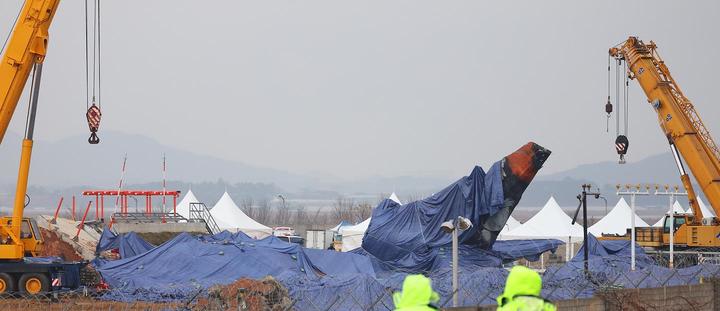Technical Analysis: Power Loss Led to Korean Air Flight Data Recorder Shutdown
An investigation into Korean Air flight’s final moments reveals both flight recorders stopped working 4 minutes before impact, likely due to complete electrical power loss from dual engine failure during an attempted landing.

The recent Korean Air incident at Jeju has raised significant questions about the simultaneous failure of both flight data recorders (FDR and CVR) four minutes before impact. While this development has sparked various theories, a technical analysis points to a straightforward explanation rooted in the aircraft’s power systems.
Modern aircraft flight recorders, despite their robust construction, rely on the aircraft’s electrical system for power. The Boeing 737 involved in this incident, manufactured in 2009, predates regulations requiring independent backup power supplies for recording devices. On these earlier models, flight recorders typically draw power from the aircraft’s main electrical buses, which in turn depend on engine-driven generators.
The sequence of events suggests a cascading system failure:
- Initial trouble prompted an attempted landing
- A go-around was initiated
- During the go-around, both engines likely experienced problems
- Loss of both engines led to complete electrical power failure
- Without engine power, the aircraft lost its main electrical generation capability
- The flight recorders, lacking independent power sources, ceased recording
This explanation aligns with other observed factors from the incident:
- The aircraft was operating with partial hydraulic power
- Control surfaces remained partially functional
- The landing gear warning system was inoperative
- The crew was dealing with multiple system failures
The timing of the recorder shutdown corresponds with reports of engine problems during the critical go-around phase. This pattern mirrors previous incidents where total electrical failure led to recorder shutdown, such as the Air Canada Flight 143 incident in 1983.
The absence of backup power systems for flight recorders in older aircraft led to regulatory changes. After 2010, new aircraft were required to have independent recorder power supplies capable of 10 minutes of operation after main power loss. However, this requirement did not apply retroactively to aircraft like the one involved in this incident.
The technical explanation for the recorder shutdown provides important context for understanding this aspect of the accident, though it represents just one piece of a complex investigation that continues to examine all factors that contributed to this tragic event.